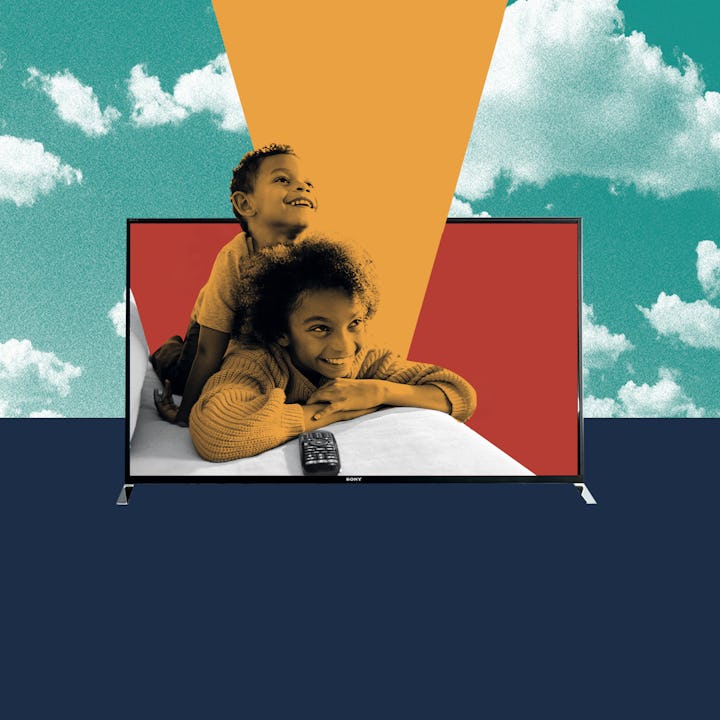The Power Of Representation: Why Seeing Diverse Characters Matters For Kids
I’ve never thought I couldn’t do something because of my race, and that is, in part, thanks to representation.

As a Black child born in the early ‘80s, I never knew what it was not to have a television show on air centering Black characters as leads, thanks to shows like “The Cosby Show,” “A Different World,” “Martin,” “The Jamie Foxx Show,” and “Living Single.” “Jem and the Holograms” featured a Black character named Shana Elmsford. As I got older, shows like “New York Undercover,” “NYPD Blue,” “ER,” and “Chicago Hope” all included core recurring Black, Indigenous, and People of Color (BIPOC) characters.
We can debate how well BIPOC characters are developed in “mainstream” shows, but seeing them as doctors, lawyers, and police officers rather than as “the help” or criminals solidified the idea that it’s possible to be more than an athlete, singer, or in a service role. I’ve never thought I couldn’t do something because of my race, and that is, in part, thanks to representation.
Representation Starts At Home
It can be easy to put blinders on and only focus on what represents your culture and community. While this is important if you’re a BIPOC or from other marginalized groups, you’ve got to take it a step further.
Because I grew up being surrounded by positive representations of my culture, this was a natural segue for when it came to raising my daughter. Give your children diverse toys. Likewise, look for books that feature diverse characters in the main and supporting roles.
Representation Is More Than An Acknowledgment Of Existence
Most people understand that people need to see themselves to feel validated, seen, and supported. However, representation isn’t just confirming that BIPOC, LGBTQ+, and women exist. True representation validates that BIPOC, LGBTQ+, and women exist on a spectrum and that we’re not monoliths.
Growing up, I remember often being treated like the Black ambassador since I went to predominantly white schools. For many of my classmates, I was one of the few Black people they knew. And if they only saw Black people in media existing in poverty, or the victims of racial animus, they assumed we all experienced life the same. As problematic as Bill Cosby proved to be in later years, “The Cosby Show” helped to solidify that there are people like me — Black people who existed in upper-middle-class circles.
Similarly, “The Jeffersons” showed a Black family shift from the working-class Queens neighborhood where Archie Bunker lived to the Upper East Side of Manhattan reinforcing the idea that we can also achieve the American Dream; thriving, building wealth, and enjoying the fruits of that labor.
Check Your Social Circle
Kids are smarter than we give them credit for. If you talk about how we’re all equal and amazing, but your social circle is homogenous, you’re still driving home the idea that different is bad. If your pre-baby social circle lacks diversity, having kids is a great excuse to befriend parents of other cultures from school or after-school activities so that your children are consistently and organically immersed in diverse environments.
Representation Normalizes Diversity
It’s important for my Afro-Latina daughter to see herself in more than one way (thank you Gabby’s Dollhouse!). Not only does she need to see Black, Latinx, and female characters, but she also needs Afro-Latinx representation. We live in a national culture where people feel it’s okay to ask “What are you?” to visible BIPOCs, so she needs to know how to respond to that and feel comfortable doing so — no matter the answer.
Because of her multicultural background, my daughter’s experiences will be different from mine. I’ll never genuinely know what it’s like to have someone assume I’m not a citizen simply because of my last name. Likewise, no one has ever questioned my Blackness or pushed me to “pick a side” since I’m clearly #teambrownskin. No one has ever told me I’m not truly Latinx because of my imperfect Spanish — although my daughter is learning Spanish.
Representation Aids In Dismantling Bias
Is my daughter the first Afro-Latina? Of course not. But if you don’t see yourself represented — especially when your parents are from very different backgrounds — it can make you feel like an outlier. Seeing Ismael Cruz Córdova, a former cast member of “Sesame Street,” who is Puerto Rican like my daughter but also identifies as Afro-Latino shows her that someone who looks like her exists in real life.
But I also want her to be comfortable around people who might be different from her — not just in race or ethnicity, but in background. This is one reason I’ve been hyper-aware that she needs to be in a diverse setting. This is why we picked a preschool where she gets to celebrate holidays like Diwali and is exposed to other cultures, which helps to reinforce the idea that different is good.
Check Your Bias & Do The Work
We all have biases, no matter how we identify. But if you’re working to consciously parent to dismantle harmful tropes and biases, then you have to be willing to do the work. This includes checking yourself when presented with proof of them.
Tackling topics of race, identity, and representation is difficult for everyone — yes, even us BIPOCs. But, as parents, most of us want to raise little humans to be productive members of society who, ideally, will do better than us and have empathy for others. Hate and mistrust aren’t ingrained from birth — they’re learned. That means the responsibility falls on parents to keep dismantling the stigmas, biases, and stereotypes we’re fighting today so our children aren’t on this same merry-go-round as adults.